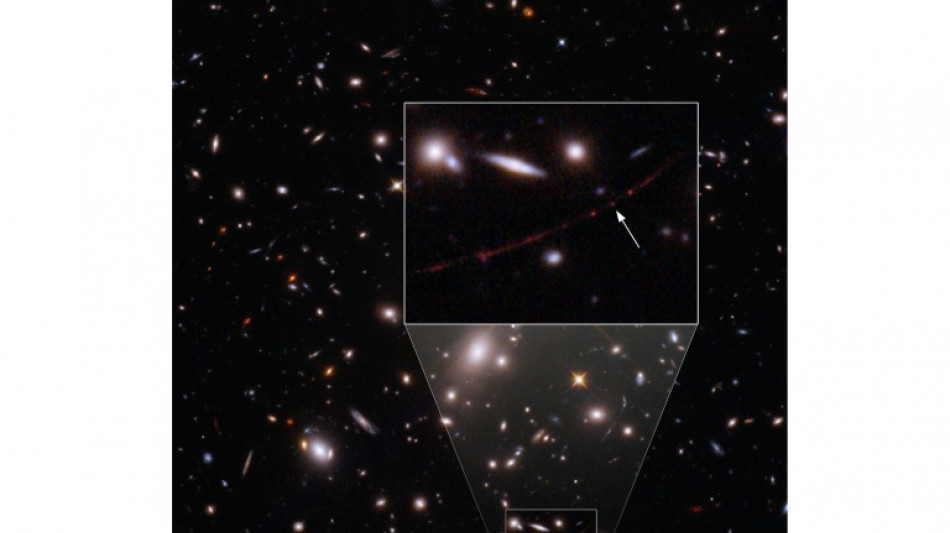
-
 Alcaraz and Rune race into Barcelona final
Alcaraz and Rune race into Barcelona final
-
Man City close in on Champions League thanks to Everton late show

-
 Bayern close in on Bundesliga title with Heidenheim thumping
Bayern close in on Bundesliga title with Heidenheim thumping
-
Tunisia opposition figures get jail terms in mass trial

-
 Putin announces 'Easter truce' in Ukraine
Putin announces 'Easter truce' in Ukraine
-
McLaren duo in ominous show of force in Saudi final practice

-
 Afghan PM condemns Pakistan's 'unilateral' deportations
Afghan PM condemns Pakistan's 'unilateral' deportations
-
Iran says to hold more nuclear talks with US after latest round

-
 Comeback queen Liu leads US to World Team Trophy win
Comeback queen Liu leads US to World Team Trophy win
-
Buttler fires Gujarat to top of IPL table in intense heat

-
 Unimpressive France stay on course for Grand Slam showdown
Unimpressive France stay on course for Grand Slam showdown
-
Shelton fights past Cerundolo to reach Munich ATP final

-
 Vance and Francis: divergent values but shared ideas
Vance and Francis: divergent values but shared ideas
-
Iran, US conclude second round of high-stakes nuclear talks in Rome

-
 Dumornay gives Lyon first leg lead over Arsenal in women's Champions League semis
Dumornay gives Lyon first leg lead over Arsenal in women's Champions League semis
-
Trans rights supporters rally outside UK parliament after landmark ruling

-
 Rune destroys Khachanov to reach Barcelona Open final
Rune destroys Khachanov to reach Barcelona Open final
-
From Messi to Trump, AI action figures are the rage

-
 Vance discusses migration during Vatican meeting with pope's right-hand man
Vance discusses migration during Vatican meeting with pope's right-hand man
-
Afghan FM tells Pakistan's top diplomat deportations are 'disappointment'

-
 British cycling icon Hoy and wife provide solace for each other's ills
British cycling icon Hoy and wife provide solace for each other's ills
-
Money, power, violence in high-stakes Philippine elections

-
 Iran, US hold second round of high-stakes nuclear talks in Rome
Iran, US hold second round of high-stakes nuclear talks in Rome
-
Japanese warships dock at Cambodia's Chinese-renovated naval base

-
 US Supreme Court pauses deportation of Venezuelans from Texas
US Supreme Court pauses deportation of Venezuelans from Texas
-
Pakistan foreign minister arrives in Kabul as Afghan deportations rise

-
 Heat and Grizzlies take final spots in the NBA playoffs
Heat and Grizzlies take final spots in the NBA playoffs
-
Iran, US to hold second round of high-stakes nuclear talks in Rome

-
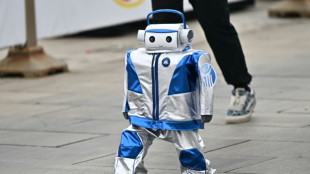 Humanoid robots stride into the future with world's first half-marathon
Humanoid robots stride into the future with world's first half-marathon
-
Migrant's expulsion puts Washington Salvadorans on edge

-
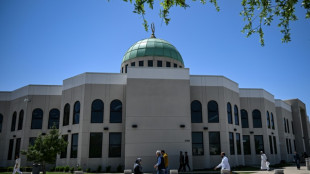 Plan for expanded Muslim community triggers hope, fear in Texas
Plan for expanded Muslim community triggers hope, fear in Texas
-
Pakistan foreign minister due in Kabul as deportations rise

-
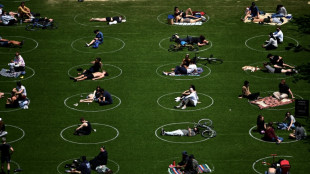 White House touts Covid-19 'lab leak' theory on revamped site
White House touts Covid-19 'lab leak' theory on revamped site
-
Dodgers star Ohtani skips trip to Texas to await birth of first child

-
 How Motorcycling Builds Life-Long Friendships
How Motorcycling Builds Life-Long Friendships
-
SFWJ / Medcana Announces Strategic Expansion Into Australia With Acquisition of Cannabis Import and Distribution Licenses
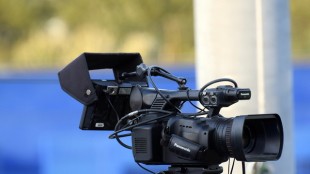
-
 US senator says El Salvador staged 'margarita' photo op
US senator says El Salvador staged 'margarita' photo op
-
Ford 'adjusts' some exports to China due to tariffs
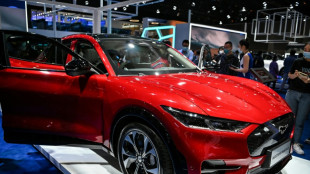
-
 Thomas maintains two-shot lead at RBC Heritage
Thomas maintains two-shot lead at RBC Heritage
-
US to withdraw some 1,000 troops from Syria

-
 Four killed after spring storms wreak havoc in the Alps
Four killed after spring storms wreak havoc in the Alps
-
Spurs' Popovich reportedly home and well after 'medical incident'

-
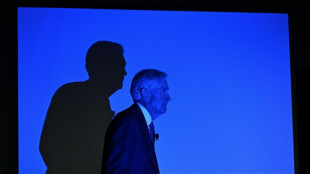 Trump goes to war with the Fed
Trump goes to war with the Fed
-
Celtics chase second straight NBA title in playoff field led by Thunder, Cavs

-
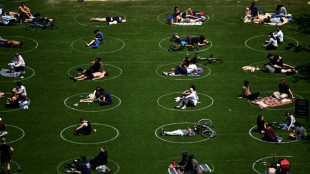 White House site blames China for Covid-19 'lab leak'
White House site blames China for Covid-19 'lab leak'
-
Norris edges Piastri as McLaren top Jeddah practice

-
 Trump warns US could ditch Ukraine talks if no progress
Trump warns US could ditch Ukraine talks if no progress
-
Judge denies Sean 'Diddy' Combs push to delay trial

-
 80 killed in deadliest US attack on Yemen, Huthis say
80 killed in deadliest US attack on Yemen, Huthis say
-
Lebanon says two killed in Israeli strikes in south


Hubble telescope spots most distant star ever seen
The Hubble space telescope has peered back to the dawn of cosmic time and detected light from a star that existed within the first billion years after the Big Bang -- a new record, astronomers said Wednesday.
The newly discovered star, called "Earendel," is so far away its light has taken 12.9 billion years to reach Earth, when the universe was seven percent its current age.
"We almost didn't believe it at first, it was so much farther than the previous most distant," said astronomer Brian Welch of Johns Hopkins University in Baltimore, lead author of a paper in Nature describing the discovery.
The previous record holder was detected in 2018 when the universe was four billion years old.
Because the universe is expanding, by the time light from distant stars reaches us it is stretched to longer, redder wavelengths, a phenomenon called "redshift."
Earendel's light came from an era called redshift 6.2.
"Normally at these distances, entire galaxies look like small smudges, the light from millions of stars blending together," said Welch in a statement.
The galaxy hosting the star has been naturally magnified and distorted by an effect called gravitational lensing.
This is when a massive object in between the observer and the thing they're looking at bends the fabric of space-time, so that rays of light coming from the target object that were diverging are bent back towards the observer.
The cosmic magnifying glass in this case is a huge galaxy cluster known as WHL0137-08, which, thanks to a rare alignment, provides maximum magnification and brightening.
"The galaxy hosting this star has been magnified and distorted by gravitational lensing into a long crescent that we named the Sunrise Arc," said Welch.
After he studied the galaxy in detail, Welch found that one feature is an extremely magnified star that he called Earendel, which means "morning star" in Old English.
Earendel existed so long ago that it may not have had the same raw materials as the stars that exist today, added Welch.
"It's like we've been reading a really interesting book, but we started with the second chapter, and now we will have a chance to see how it all got started," he said.
Astronomers intend to gaze at the star using the James Webb Space Telescope, Hubble's successor, which is highly sensitive to infrared light from the oldest celestial bodies, in order to confirm Earendel's age, mass and radius.
It has been hypothesized that primordial stars were made solely from the elements forged after the Big Bang: hydrogen, helium and trace amounts of lithium, and should be more massive than stars that exist today.
It remains to be seen if Earendel belongs to these so-called "Population III" stars, but while the probability is small, it is enticing, said Welch.
Webb, which should go online this summer, is expected to break Hubble's records and peer even further back in time.
O.Johnson--AMWN


